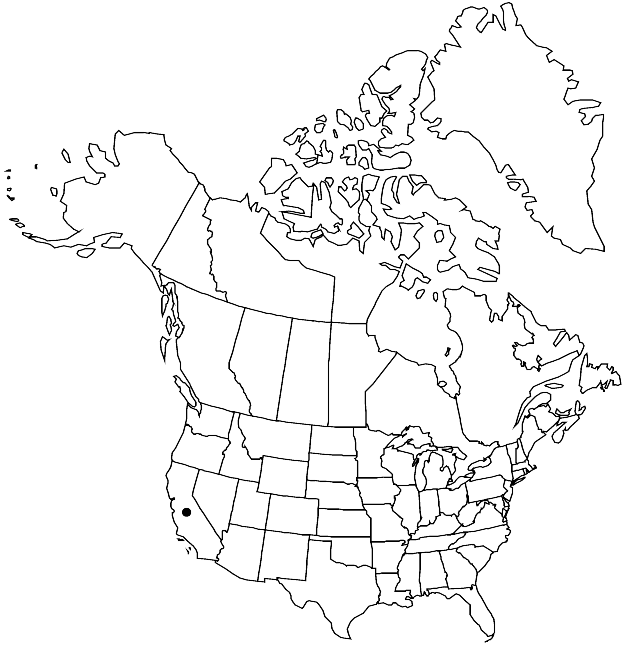Streptanthus oblanceolatus
Madroño 56: 127, fig. 1. 2009.
Biennials; (glaucous), glabrous throughout. Stems: (base woody), virgately branched distally, 5–10 dm. Basal leaves rosulate; petiolate; blade oblanceolate, 3.5–7 cm, margins coarsely dentate distally. Cauline leaves: blade linear-lanceolate, 2–10 cm, (much smaller distally), base auriculate, margins entire. Racemes bracteate below or between proximalmost 1 or 2 flowers, (lax). Fruiting pedicels ascending, 3–6 mm, (strongly expanded at receptacle). Flowers: calyx shape unknown; sepals yellow, 8–9 mm, slightly keeled, (apex acuminate, recurved); petals yellowish, 12–16 mm, blade 4–5 × 0.5–1 mm, (adaxial pair slightly longer), margins not crisped, claw 7–9 mm, wider than blade, (apex recurved); stamens in 3 unequal pairs; filaments: abaxial pair (distinct), 9–11 mm, lateral pair 7–9 mm, adaxial pair (connate distal to middle of their length), 13–16 mm; anthers: abaxial and lateral pairs fertile, 3–3.5 mm, adaxial pair sterile, ca. 1 mm. Fruits divaricate ascending, torulose, flattened, 4–8 cm × 1.5–2 mm; replum straight; ovules per ovary unknown; style to 1 mm; stigma entire. Seeds oblong, ca. 2 × 1 mm; wing distal.
Phenology: Flowering Jun–Jul.
Habitat: Cliffs and canyon walls in conifer forests
Elevation: ca. 400 m
Discussion
Of conservation concern.
Streptanthus oblanceolatus is known from Box Canyon, Trinity River, Trinity County.
Selected References
None.
